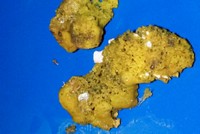Advertisement
Grab your lab coat. Let's get started
Welcome!
Welcome!
Create an account below to get 6 C&EN articles per month, receive newsletters and more - all free.
It seems this is your first time logging in online. Please enter the following information to continue.
As an ACS member you automatically get access to this site. All we need is few more details to create your reading experience.
Not you? Sign in with a different account.
Not you? Sign in with a different account.
ERROR 1
ERROR 1
ERROR 2
ERROR 2
ERROR 2
ERROR 2
ERROR 2
Password and Confirm password must match.
If you have an ACS member number, please enter it here so we can link this account to your membership. (optional)
ERROR 2
ACS values your privacy. By submitting your information, you are gaining access to C&EN and subscribing to our weekly newsletter. We use the information you provide to make your reading experience better, and we will never sell your data to third party members.
Synthesis
Stereoenrichment with a single catalyst
Multitasking titanium catalyst erases and rewrites alcohols’ stereochemical information using two different mechanisms
by Brianna Barbu
October 27, 2023

Sometimes conformity is a good thing. Particularly when it comes to stereochemistry. While stereocenters arise in mirror-image enantiomer pairs when left to their own devices, the enantiomers can have very different biological activity. So synthetic and medicinal chemists would prefer to make only one of them at a time.
Researchers from the Shanghai Institute of Organic Chemistry, led by Zhiwei Zuo, have now added a new reaction to the stereoselective toolbox. They have devised a clever method for turning mixtures of alcohol isomers into an enantiomerically pure product using a single catalyst (Science 2023, DOI: 10.1126/science.adj0040) .
Once a mixture of stereoisomers is created, it’s very difficult to amend that without separating the isomers from each other and throwing out the unwanted one. This is because physics isn’t on chemists’ side in this matter. Mixtures have higher entropy, which the universe prefers. And something called the principle of microscopic reversibility says that any mechanistic step that flips an unwanted enantiomer into its twin can also flip it back. Fixing a mixture requires at least two distinct steps: one to erase stereochemical information from the unwanted isomer, and another to rewrite it to match the desired form.
Chemists developing deracemization reactions have previously accomplished this by using different catalysts for each step. “We saw a more straightforward way to do that,” Zuo says—with a single titanium catalyst that can play two different mechanistic roles, bound to a chiral phosphoric acid ligand.
Light provides the energy to kick an electron from the ligand to the metal center through a process called ligand-to-metal charge transfer. The reduced metal center can then facilitate a radical reaction to break a carbon-carbon bond adjacent to the alcohol, creating an achiral intermediate. The titanium changes roles to act like a typical transition metal catalyst to coordinate with the intermediate and stitch the molecule back together. Throughout the reaction, the ligand helps direct the stereochemistry, making it so that bonds are preferentially broken in the unwanted isomer and ensuring that the molecules are reassembled with the correct orientation.
Individually, each step is only moderately stereoselective but they amplify each other to give nearly complete conversion to a single isomer. “We can get a synergy effect,” says Zuo.
The reaction works on cyclic secondary and tertiary alcohols with ring sizes between 4 and 7 carbons as well as some acyclic amino alcohols. The ideal ligand is different for each type of ring, and the molecule has to be able to stabilize the radical intermediate for the transformation to work, Zuo says, but he and his team are far from finished working on this reaction. They are developing another paper that describes more mechanistic explorations and an expanded substrate scope, he says.
In an email, Alison Wendlandt of the Massachusetts Institute of Technology called the work “spectacular” and “literally amazing,” praising it for its elegance and simplicity. She said the method “significantly expands” the scope of molecules that can be deracemized, opening up new routes to makinguseful chiral building blocks.
Also in an email, Robert Knowles of Princeton University called the paper “an exciting addition to the literature on light-driven deracemization” and said it could pave the way for exciting future advances.
Zuo says he envisions improving the reaction to edit the stereochemistry of alcohols—or other key functional groups—on more complex molecules, as a form of molecular editing.





Join the conversation
Contact the reporter
Submit a Letter to the Editor for publication
Engage with us on Twitter